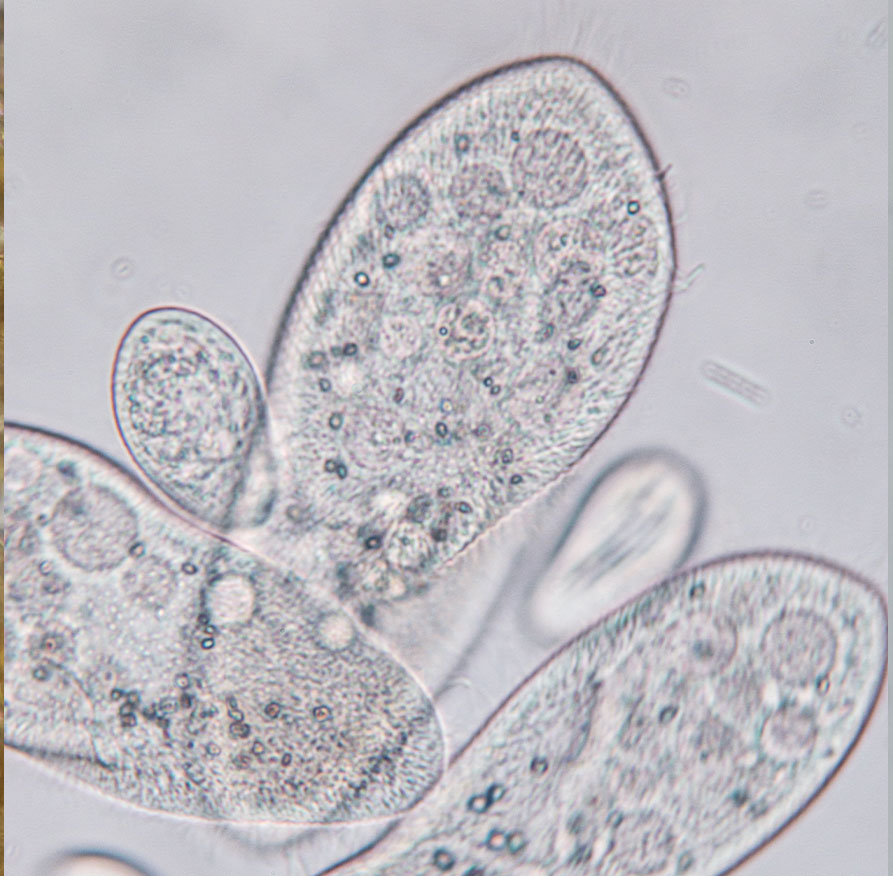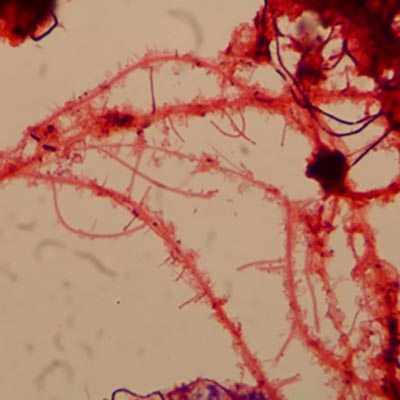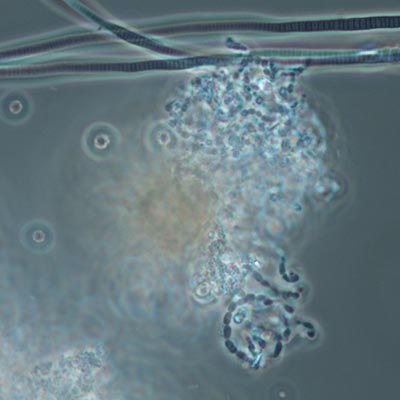Microbes: Why Are They Important?
Microbes, or “bugs”, are an integral part of the wastewater treatment process — in many ways they are nature’s little clean-up crew, working toward cleaning the water.
The success of a wastewater treatment facility largely depends on maintaining the right balance of these microorganisms. Each stage of the treatment process hosts various species—bacteria, protozoa, and small organisms—each playing a unique role in cleaning up wastewater.
When these microbes work together effectively, they transform polluted water into clean, safe water, protecting our environment and public health. Understanding their importance is key to optimizing wastewater treatment and ensuring a sustainable future.

Bacteria
Bacteria are everywhere in the wastewater treatment process, showing up in all shapes and sizes—spheres, rods, spirals, you name it! They form the backbone of a healthy microbial community, making up over 95% of the biomass in any treatment system.
Bacteria have a range of responsibilities in wastewater treatment, the most important being the removal of carbon and nitrogen. Carbon, often measured as COD (chemical oxygen demand), is a key nutrient found in everything living, and is the most prominent nutrient in wastewater treatments. Its breakdown and removal, along with Nitrogen, are crucial for effective treatment, highlighting the importance of bacteria in the process.
Amoebas

AMOEBAS ARE SLOW-MOVING PROTOZOANS CHARACTERIZED BY THEIR SHAPELESS APPEARANCE. They are usually found early in the treatment process, where food sources like carbon and free bacteria are easily available and they do not have to travel very far to find it. Amoebas slowly surround food particles with their fluid bodies before gradually consuming them. They may move slowly but they are effective feeders and play a crucial role in the ecosystem.

Ciliates

CILIATES ARE A TYPE OF PROTOZOAN THAT ARE IDENTIFIED BY TINY HAIRS CALLED CILIA. Free-swimming ciliates are the first to appear in wastewater treatment and can typically be found when food is readily available. Once the food floating around the bulk water has been consumed, the crawling ciliates begin to dominate the system. Ciliates have bundles of cilia that can work as legs as they move around floc searching for food. These organisms are a welcome sight because they contribute to floc compaction which leads to greater solids separation from the water. In adverse conditions, ciliates can form a hard protective shell as a stress response. Stress can be caused by low oxygen (DO), imbalanced BOD/COD levels, or changes in pH, toxicity, or any other atypical system parameter. We love to see these hairy guys, and we want to keep them happy!

Rotifers

ROTIFERS ARE SPLIT-FOOTED METAZOAN MICROORGANISMS. They get their name from the Latin words “rota” and “fer”, meaning “wheel bearer” due to the cilia near their mouth moving in circular patterns to draw in food. Aside from their characteristic mouths, they also have a unique split foot that they cover in mucus to anchor themselves and trap solid pieces of floc floating around in wastewater treatment systems. Typically found in older sludge systems, the presence of rotifers indicates good treatment. If you are fortunate to find a rotifer under the microscope, the odds are it is a female; we love a strong, independent queen! They also have little to no tolerance for toxicity, so when they are missing you know the treatment needs attention.

Water Bears

WATER BEARS ARE MAJESTIC EIGHT-LEGGED METAZOANS AND ARE PROBABLY THE MOST FAMOUS BUG YOU WILL FIND IN WASTEWATER TREATMENT. They are the top predators in wastewater, preying on bacteria, protozoa, and metazoans. Water bears take the longest to appear in treatment and their presence may be an indicator of older waste. They are known to shed their skin and lay their eggs within it, providing a cozy protective spawn point for their offspring. Moms really are the best!

Beware of the Bad Guys
Filamentous Bacteria
Yes, we know, earlier we listed bacteria as our friend! However, not all species of bacteria are beneficial —some can take on a villainous role and wreak havoc if they get a chance to dominate the scene. These infamous fellows are filamentous bacteria. They have a bad reputation in wastewater treatment because they contribute to operational issues like foaming and sludge bulking. Filamentous bacteria are made up of several species that look like long strands, or filaments. They have a larger surface area, which helps them defeat beneficial bacteria for food and other resources.

NOSTOCOIDA LIMICOLA, WHO WE ALSO ADDRESS AS “NOISTY NASTY,” IS A LONG TANGLY FILAMENTOUS BACTERIA WITH ROUND CELLS, VAGUELY RESEMBLING A PEARL NECKLACE. Noisty extends from floc, contributing to sludge bulking, and is often associated with nutrient deficiencies and septic wastes containing volatile fatty acids (partially broken-down fatty compounds). This species also stains positive in both Gram and Neisser staining, showing up purple and blue in each test. This filament is also associated with starchy wastes, particularly from potato processing, so maybe it’s a good idea to not share your fries!


TYPE 0041/0675, OR “BULKAMANIA/BULKSTER” TO KEEP THINGS SIMPLE, ARE TWO SPECIES OF FILAMENTOUS BACTERIA TYPICALLY LUMPED TOGETHER DUE TO THEIR SIMILAR CHARACTERISTICS, THE ONLY DIFFERENCE BEING THAT TYPE 0041 IS THICKER IN DIAMETER. Their characteristic fuzzy coating is known as epiphytic growth. Both species consist of hefty filaments with a rectangular cell shape and extend from floc to contribute to sludge bulking. They thrive in conditions with a low food to mass ratio (F/M) and can overpower other bacteria for food with their large bodies. These filaments are variable in staining tests, meaning they can appear both positive and/or negative in each test. Not sure if it’s scary or interesting but these big guys are always ready to take on any microbes in their way. Oh boy!


TYPE 1863, OR “FATSO”, IS A FILAMENTOUS BACTERIA SPECIES THAT THRIVES IN WASTEWATERS WITH HIGH FOG. Under the microscope this filament consists of thick sausage-shaped cells and is found protruding from floc formations and floating around in the bulk water solution. While Type 1863 may seem lazy, they are fast eaters that prefer residing in environments where the food is readily available and is easy to break down, favoring high F/M and shorter retention times. This species is quite tolerant of low dissolved oxygen (DO) conditions. In staining tests, it usually stains negative in both gram and Neisser staining, appearing pink or brown.

The Huma Environmentalists
At Huma Environmental, we’re truly microbe-nerds. We passionately study these microbes and want to share our knowledge with you. One of our goals is to educate you about the importance of wastewater microbiology and how it affects our daily lives. Whether you realize it or not, everyone contributes to wastewater, and there’s a fascinating ecosystem waiting to be explored.
Huma offers a variety of products, including macro- and micro-nutrition, biostimulants, and bacterial strains, powered by our patent Micro Carbon Technology, to help improve microbial health in wastewater. Our team also loves to educate and provide training on different wastewater topics. Let us help you understand wastewater microbiology better while cleaning up your wastewater treatment plant!


